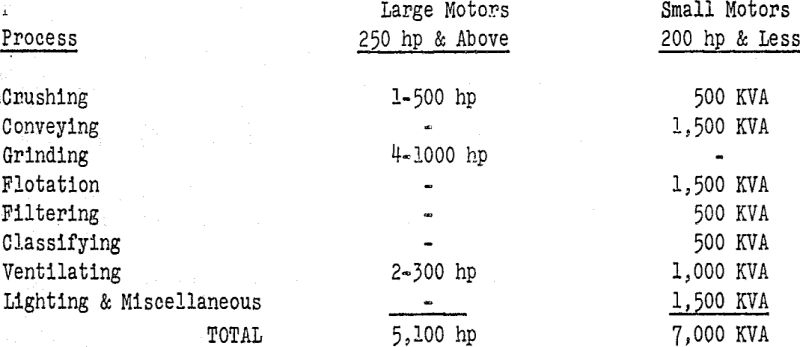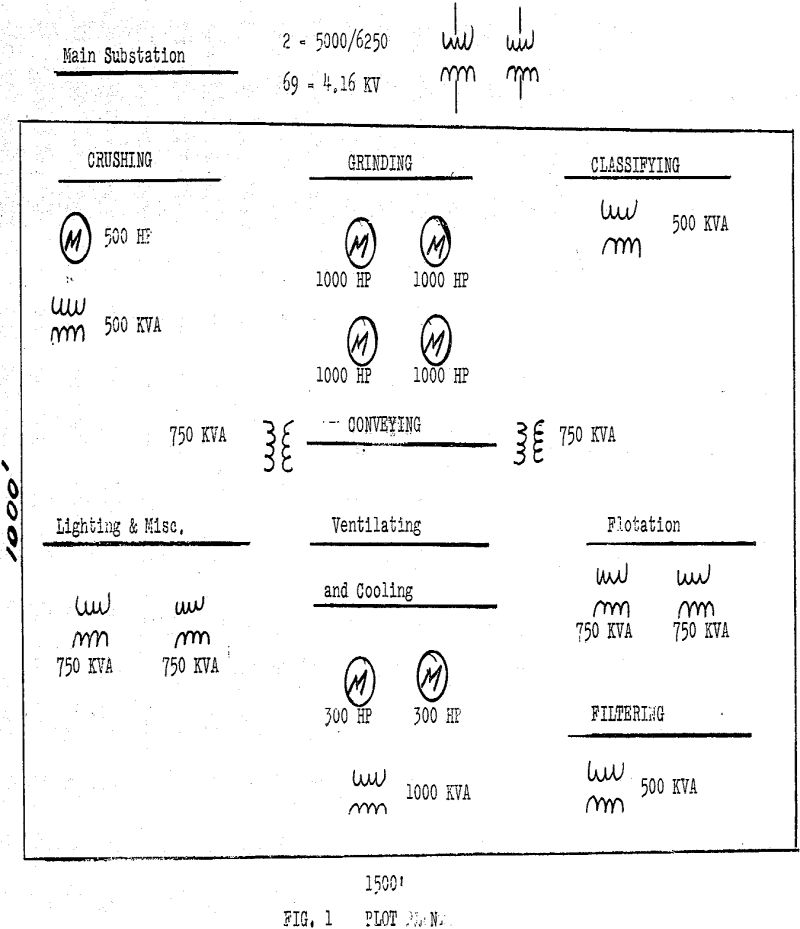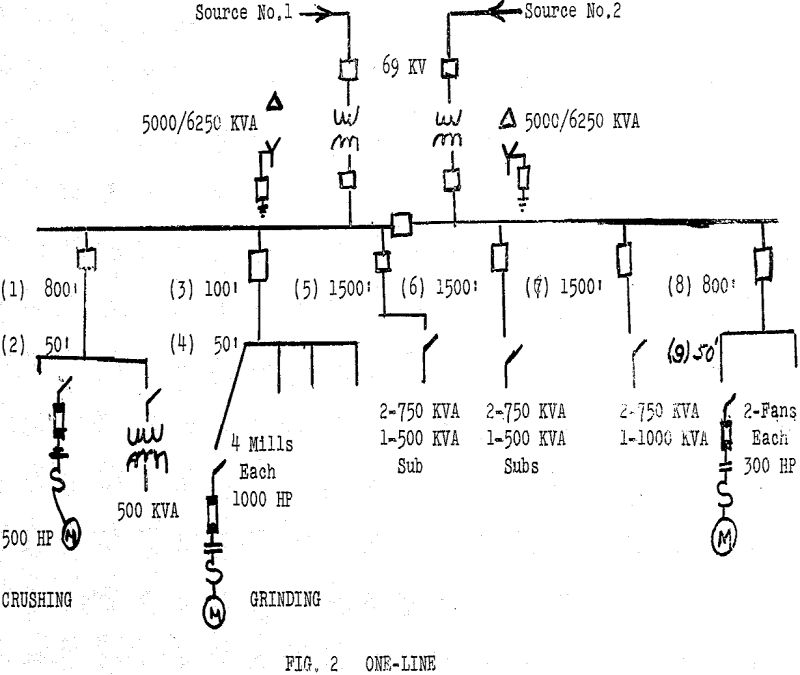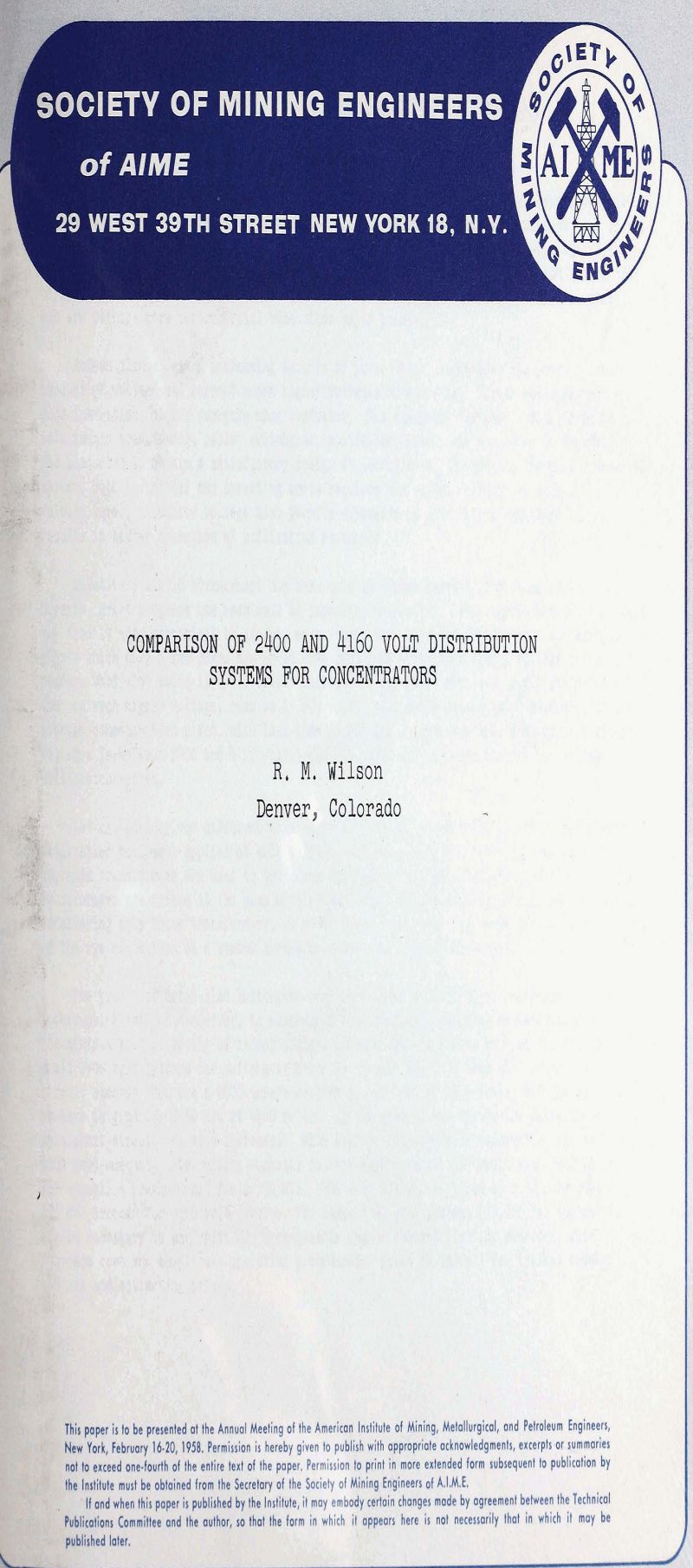Concentrating plants, in common with other types of industrial plants, cannot operate without, electric power. The electric distribution system and utilization equipments therefore, must be carefully considered in all phases of plant design. Two important aspects of proper distribution and usage of electric power are the selection of voltage levels and the methods of system grounding. These are not necessarily the most important design considerations, but are perhaps more controversial than other major points.
Relatively little advancement has been made in recent years in improving conductors; however, great progress has been made in improving insulation. Thus modern plants, in-general, now find it more economical to use higher voltages than they did previously. For example plants which only a few years ago would have used 2400 volts as a system voltage often find nowdays that 416o volts is their proper choice.
For either 2400 or 416o volt service 5 kv cable is generally used. The selection of conductor size for any circuit is based on continuous current, voltage drop, losses, and short circuit. In industrial systems voltage drops and losses are seldom critical, and selection is usually based on continuous current rating, with the minimum conductor size being determined by the maximum permissible cable temperature rise under short circuit conditions.
The final equipment cost which will be evaluated is the transformer section of the load center unit substation, which reduces the 2400 or 416o volt distribution voltage to 480 volts for utilization by motors rated 200 horsepower and below. Load centers rated 1000 kva are lower in price at 416o volts, and the 500 and 300 kva substations are slightly lower at 2400 volts.
The equipment cost comparison previously discussed shows that the distributions-system is less expensive at 416o volts than 2400 volts mainly because of lower cable prices, and secondly switchgear prices; with transformers showing little difference.
Consider now, in more detail, the application of the above principles to ore concentrating plants; the upgrading of mineral ores such as iron, molybdenum, nickel, copper, lead, zinc, or uranium.
Such plants treat areas in many different ways, not only because of the type of mineral involved, but because of the various ores in which the same mineral is found. However, there are numerous common processes such as crushing, grinding, classifying, flotation, or filtering used in nearly all concentrating plants. Also there are requirements for materials handling, conveying, pumping, ventilating, and lighting as found in other types of industrial plants. The individual loads are similar from plant to plant, and the basic uses of motors and control, and power distribution facilities are nearly alike in all industries.
Let us assume a plant, therefore, which for the purpose of discussing voltage selection, could be representative of many different sizes and types of plants in the mineral industry.
Assume a plant served from a 69 kv utility source and with a connected load as follows:

Solid grounding is seldom used or recommended for a medium voltage system where motors are applied, because of the large amount of fault current which can flow. Heating and burning at a point of fault are a function of the square of the current and of time, therefore for motors it is most desirable to limit the magnitude of line-to-ground fault current which can burn the iron core of the motors, and necessitate expensive restocking. If the ground current is limited by a resistance, and the fault removed by fast relaying, it is seldom necessary to restock the motor.
Low resistance neutral grounding of medium voltage systems is generally applicable for use in most concentrating plants. It is easily achieved by connecting a grounding resistor between the incoming power transformer secondary neutral and ground, and by using a residual (or ground relay) in the current transformer residual circuit.



